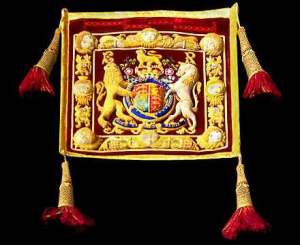Rootstime.be in Belgium recently published a review of our latest CD, A Handful of Locusts. Since the review was in Dutch and most of our audience doesn’t read this language we’ve translated it for our English speaking audience:
The Victor Mourning – A Handful of Locusts
If only autumn were already here. God, how I long for the silence, the peace, and the dark days of November. The tumult of summer always paralyzes my attempts to get anything done. Because of this I only dare make my way out into the world at night, but even then summer’s tumult is not completely gone. Then there are those dang farmers that disturb my much needed rest like beings possessed, racing their tractors across the fields. Luckily there’s a new voice out there, “A Handful of Locusts” by The Victor Mourning, evoking autumnal scenes that provide comfort and refuge from the infernal madness of summer.
It’s always autumn in the mind of Austin resident Stephen Lee Canner – vocalist, guitarist, and songwriter for The Victor Mourning – and seemingly the clock is turned back to the year 1880. Along with his fiancee Lynne Adele and violinist Stefan Keydel, his longing for that dark era of Victorian America is expressed through morbid Southern Gothic tales wrapped in somber, sepia toned, Appalachian folk music. The songs on “A Handful of Locusts” sound like they were recorded in an old, crumbling Victorian house.
If you listen closely, you can hear the creak of rotten wooden floorboards in the background, made by the ghosts of the previous occupants who still wander the house where yellowed black and white photos hang crookedly on the walls. Stephen Lee Canner presents these morbid tales of deceit, violence, and murder, his wailing lamentation accompanied by Keydel’s mournful fiddle and the ominous sounding banjo of Adele. An example is the tale of local eccentric “Zachariah”, who read too deeply into Greek mythology and imagined himself as Icarus. Like Icarus, Zachariah did not fly to the sun but to death. Or the tale told in “Grasshoppers” of another eccentric who ate nothing but grasshoppers. The verses on this tune are sung by Jad Fair (known for his work with, among others, Daniel Johnston, Yo La Tengo, Isobel Campbell, and Teenage Fanclub.)
No, the members of The Victor Mourning are not jolly Frans Bauers [a famous Dutch pop/folk singer.] If things don’t work out with their musical career they could always start a funeral home. I wouldn’t recommend “A Handful of Locusts” to anyone who uses “Carpe diem” or “Living la vida loca” as their motto. Rather, “A Handful of Locusts” is fodder for the denizens of the dark and other nocturnal vermin who avoid the daylight. Such as your very own,
Roen Het Zwoen
Translation by Stephen Lee Canner


